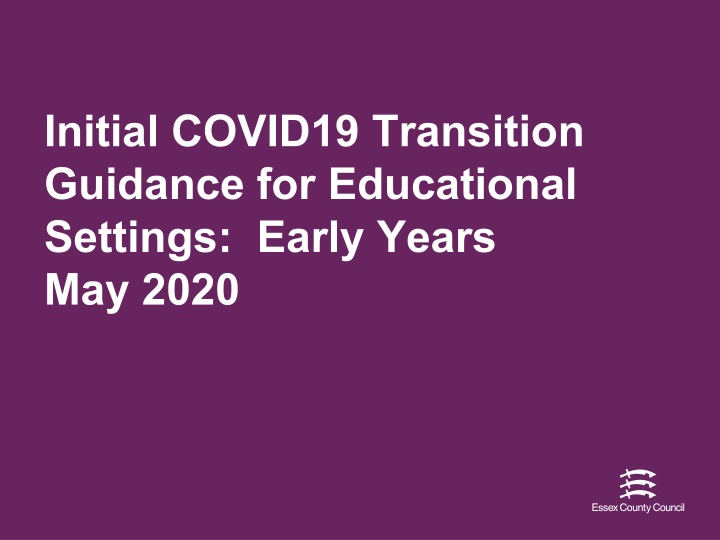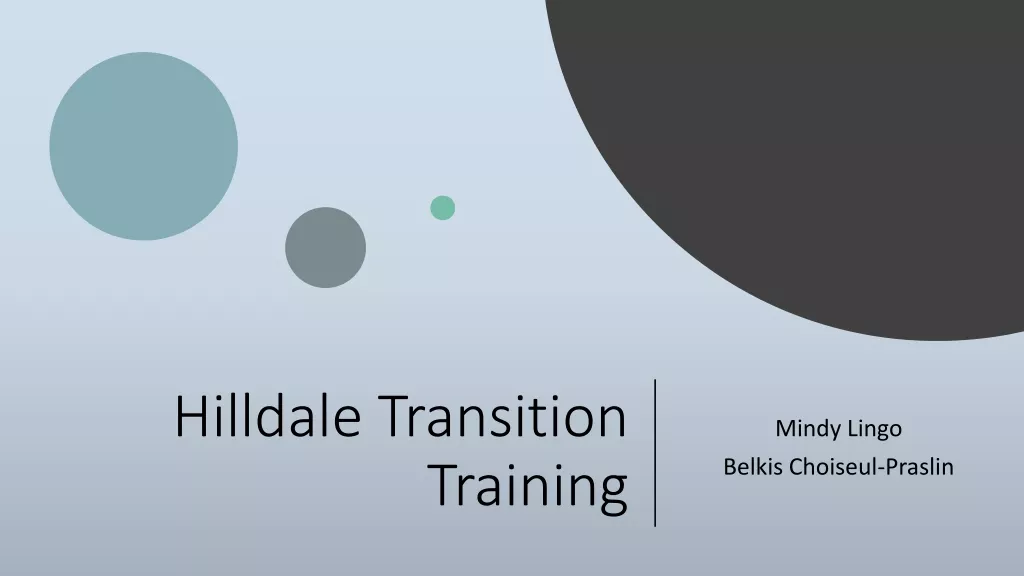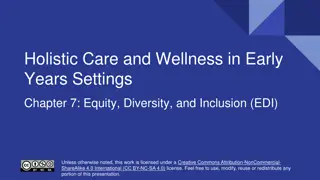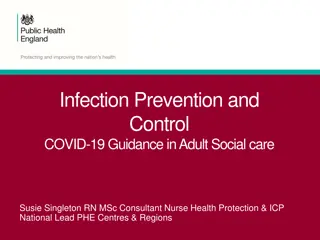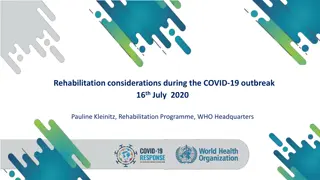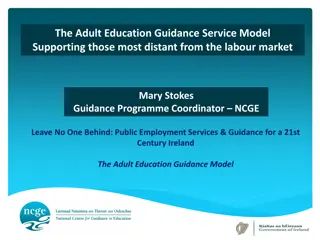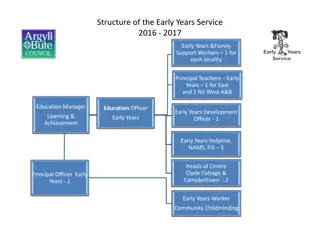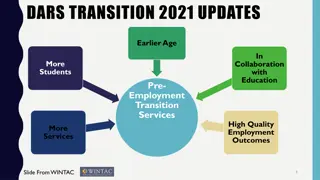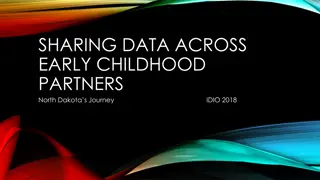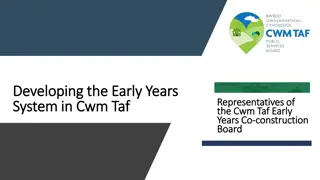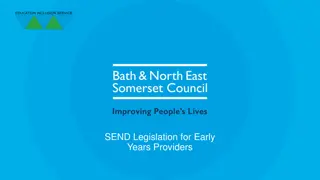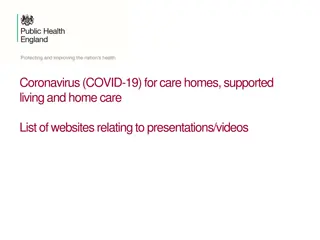Initial COVID-19 Transition Guidance for Educational Settings: Early Years
The COVID-19 outbreak will impact transitions for children with SEND and others. Educational settings need to consider transitions for those starting school, moving between rooms, and more. This guidance provides questions and ideas to support effective approaches within current limitations, focusing on gathering information, communication, and emotional support.
Download Presentation

Please find below an Image/Link to download the presentation.
The content on the website is provided AS IS for your information and personal use only. It may not be sold, licensed, or shared on other websites without obtaining consent from the author.If you encounter any issues during the download, it is possible that the publisher has removed the file from their server.
You are allowed to download the files provided on this website for personal or commercial use, subject to the condition that they are used lawfully. All files are the property of their respective owners.
The content on the website is provided AS IS for your information and personal use only. It may not be sold, licensed, or shared on other websites without obtaining consent from the author.
E N D
Presentation Transcript
Initial COVID19 Transition Guidance for Educational Settings: Early Years May 2020
Introduction We recognise that the COVID-19 outbreak will have a significant impact on transitions for all children and young people, including those with SEND and other additional needs, their families and all educational settings. All young people will be undertaking a transition this summer as they do every year, with particular consideration needing to be given to those starting school, moving between rooms and to a new setting. It is not yet clear as to how long settings will remain closed or only partially open, impacting the transition process as we move through into the Autumn term All children returning to their Early Years setting after a period of time at home, will also be experiencing a transition, especially as the environment and routine may be changed to meet the current guidelines. Educational settings will already be in the process of planning transitions, including how to manage them differently this year. There is a range of practice in place in terms of how all settings support transition for the children leaving and joining them; it will be important to capture and share positive ways of working. This guidance aims to raise initial questions and ideas with all educational settings to support the most timely and effective approaches possible within the current limitations; ECC will also be sharing advice with parents and carers. It should be read alongside relevant DfE guidance documents for operating during COVID19, reopening guidance, loss and bereavement, supporting wellbeing and ensuring Reasonable Endeavours. These and others have been shared via direct email and are also available on the Essex Early Years Provider Pages https://eycp.essex.gov.uk/covid19-coronavirus/. Specific safeguarding information is available on the Essex Safeguarding Children Board website https://www.escb.co.uk/working-with- children/early-help-and-support/ Settings and families may also find it useful to refer to this overarching transition document from Ben Brown's work. There are perhaps three key, interconnected themes of transition for young children and adults alike, both for sending and receiving settings. These are likely to apply to all children in your setting currently and not just those about to have a significant transition: Gathering and sharing of information Communication opportunities and relationship building Supporting emotional well-being
All children Gathering and Sharing of Information Communication and Relationship Building Supporting Emotional Wellbeing Have you considered ways of gathering and sharing information about the children before they return or start at your setting or transition to school? Are all families, including those new to the setting, able to access your online platforms to receive the regular COVID19 updates from your setting? Have you thought about the emotional support needed for your staff, families and children at this time? Have you considered how you will manage endings, as well as new beginnings? Are there clear key contacts for your setting in place for schools and families to use? Do you have consent to send and receive personal information about children leaving and joining your setting? Have you considered the emotional impact on children s mental health, such as regression of development and/or separation anxiety? What support can the key person provide when considering bubbles, children starting at the setting and transitioning to school? Be aware that some children s experiences during lock down may not have been positive ones. Reflect on the impact of these on their emotional wellbeing and need for additional nurturing. Have you contacted the schools children will be starting to agree how to share information at this time? If you are unable to hold your usual transition events and visits, what virtual or socially distanced options can you make available to families to ensure relationships can be built? How will they be accessed and when will you hold them? Have you considered settling in procedures and alternatives to home visits? Don t forget the transition passport can be shared on-line with appropriate consent. Have you made families aware of your ethos and community as well as your expectations and routines? Are they aware that you are also able to support them? How do you send and receive information about children s development? For example, permissions to share on-line learning journals. For children who will be transitioning to school or a new setting, have you identified, recorded and shared vulnerabilities and challenges faced by the family related to COVID19? Have you discussed with families their child s progress during lock down and do they have any concerns or special events to share? Do you anticipate any children likely to have a delayed start due to Shielding? What support are you going to put in place for these children? Have you considered the virtual conversations you can have with children about their time in lock down, what have they been up to and how they are feeling about moving onto school or returning to the setting? What are they looking forward to doing when they return to the setting? What adjustments for timings and environment do you need to consider for plans for the Summer and Autumn terms, taking into account trauma and time/learning lost this term? Can you build flexibility in, to ensure children are best supported at times of uncertain change? Are there any wider family needs to be aware of. For example, have you thought about how to share information with family members who have low literacy skills or EAL? Have you asked if heads/teachers can provide a virtual tour of the school and/or photographs of reception teachers and classrooms that can be shared with the children? Are you able to sign post parents to appropriate specialist guidance available? (links on slides 5&6)
Further, for children with additional needs Gathering and Sharing of Information Communication and Relationship Building Supporting Emotional Wellbeing Do children have CIN or Child Protection Plans, PEPs, Care Plans, One Plans, EHCPs or IPRA funding in place? How do you ensure you share and receive these plans efficiently and meaningfully? Child Protection Records - File Transfer Have you considered virtual ways for holding meetings and sharing information for new starters and children who are due to start school in September, plans for a supported transition should be discussed with the school and other professionals involved. Additional support or plans may need to be implemented due to time lost and any changes needed. Are you prepared for the higher level of emotional and wellbeing needs and long term nature of this, particularly for children with SEMH and Autism/Social Communication needs? How do you build good practice for preventing and managing anxiety into the environment and daily routines of the setting? For new and vulnerable children, who are in the existing team around the child? Do you have the contact details to link with these practitioners. When planning your remodelled environment have you considered the needs of children with SEND. For example, have you provided quiet space for emotional regulation? Have you thought about how the lockdown period has affected the process of identifying possible SEND and for children with transient delays, how the opportunity to implement strategies to close developmental gaps has been stalled. What steps can be taken to accelerate the support needed? Have you considered discussions you can have with parents/carers. Arrange a virtual or socially distanced meeting to find out how the child and family have been during the period of lockdown and any progress or changes that have taken place. Any concerns that the parents or child may have about returning to the setting and the changes that will be in place during this time? What virtual opportunities are available for children that need a level of enhanced support to initially meet and keep in touch with key practitioners to support their transitions. Be aware of the possible need to reassess children s learning and development as this may have been affected by time away from the setting. The child s One Plan may need to be adjusted to reflect this. Be mindful that children may have made progress in other areas. Are you providing additional resources to promote emotional well-being at this time, such as social stories, and emotions cards. Complete a Risk Assessment that takes into account any changes that you will be making to group sizes and layout of premises to comply with covid19 safety measures. Thought must be given to the physical space needed to meet the child s needs. What opportunities can you provide for parents to talk through and reflect on any anxieties they may have? Have you thought about how you might make contact with other professionals working with the child in order to support their emotional wellbeing at this time? Ensure that the additional support and any enhanced staffing levels can be put in place for the child s return. Attention must be given to providing the environment and
Useful links and resources Education, Early Years and SEND cluster staffing details are published here Physical and Sensory Impairment Specialist Teaching Service Essex Local Offer Essex Child and Family Wellbeing Service transition Essex Early Years Portal Essex Early Years transition One Planning advice and support Additional person centred planning resources Young Minds have a range of resources transition tips for CYP with SEND Nasen also have an informative guide for supporting young people when changing educational settings This Transition Toolkit designed by The Autism Education Trust offers practical advice activities to support change
Useful links and resources continued school readiness and transition passport https://schools.essex.gov.uk/data/saes/Early_Years_Team/Documents/DS17_6017School%20ReadinessBookletPages.pdf Parent friendly resource for starting school -general tips. https://www.tlc-essex.info/getting-ready-for-school/ The Essex Child and Family Well-being Service has key information for School Readiness https://essexfamilywellbeing.co.uk/school-readiness/ The BBC Bitesize has useful resources for parents whose children are starting primary school https://www.bbc.co.uk/bitesize/collections/starting-primary-school/1 and additional advice for transition when schools are closed https://www.bbc.co.uk/bitesize/articles/zrynnrd The Essex Family Forum families for children and young people up to the age of 25: https://essexfamilyforum.org/ Families in Focus: http://www.familiesinfocusessex.org.uk/ SEND IASS Impartial Information, Advice and Support for families of CYP with SEND: SEND.IASS@essex.gov.uk To support families during COVID19, The Essex Child and Family Wellbeing Service has created a brand new resource hub. Mentally Healthy Schools Anna Freud Centre support for mental health during COVID19. Anna Freud Centre has produced a guide to supporting the wellbeing of staff at schools and colleagues during periods of disruption A visual story from Makaton explaining Covid-19 for children and young people of all ages A Carol Gray Social Story explaining pandemics and Covid-19
